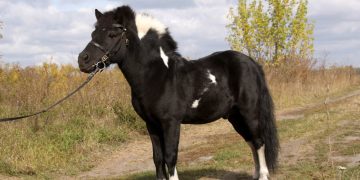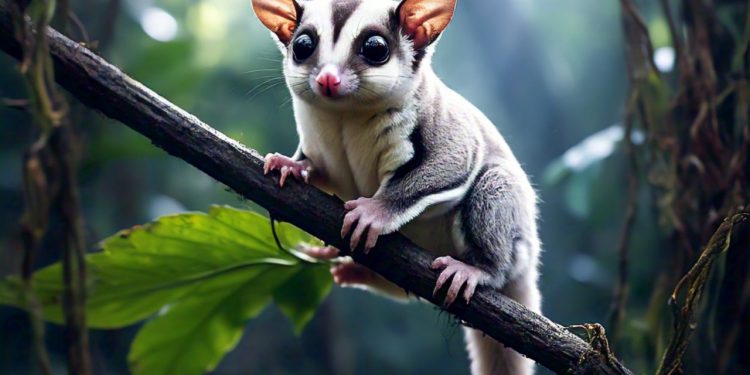Sugar gliders, small nocturnal marsupials native to Australia and Indonesia, have gained popularity as exotic pets due to their playful nature, social behavior, and unique appearance. With the growing demand for these charming creatures, sugar glider breeding presents an exciting business opportunity. However, successful breeding requires a deep understanding of the animal’s biology, care, and breeding needs. This comprehensive guide will walk you through the essential steps to start and manage a profitable sugar glider breeding business, from setting up a suitable breeding environment to marketing and selling your gliders.
Understanding Sugar Gliders: A Foundation for Your Business
Before diving into breeding, it’s essential to gain a thorough understanding of sugar gliders, their physical characteristics, and their behavioral needs. This knowledge will help ensure you breed healthy gliders and provide them with the proper care, which is crucial to the success of your business.
Physical Characteristics and Behavior
Sugar gliders (Petaurus breviceps) are small, nocturnal marsupials that weigh about 4-5 ounces and measure around 6-8 inches in body length. They have a distinctive membrane, called the patagium, between their front and hind limbs, allowing them to glide over long distances—a key feature that gives them their name. These gliders have large, dark eyes adapted for low-light conditions, as they are nocturnal by nature.
Sugar gliders are social animals and typically live in groups in the wild, relying on one another for companionship and protection. They communicate through various vocalizations, such as barking or chirping, and require constant stimulation to stay healthy and happy.
Why Sugar Gliders Make Popular Pets
Sugar gliders are adored for their playful, affectionate nature, and their ability to bond closely with their human owners. Their small size and relatively low maintenance requirements compared to larger exotic pets make them an attractive choice for people seeking unique pets. However, their nocturnal behavior and need for social interaction and specialized care make them more suitable for experienced pet owners.
Due to their social nature, sugar gliders thrive in pairs or groups, which is important to consider when breeding them for sale. The demand for healthy, well-socialized sugar gliders has created a lucrative market for breeders who understand their needs and can provide quality pets for prospective owners.
Step-by-Step Guide to Building a Profitable Sugar Glider Breeding Business
1. Understand the Legal Requirements
Before embarking on a sugar glider breeding venture, it’s crucial to understand the legal requirements for breeding and selling these animals. Laws and regulations surrounding the breeding of exotic pets, including sugar gliders, vary by location. Some areas may have restrictions or require specific permits to breed and sell these animals.
- Research Local Laws: Ensure that breeding sugar gliders is legal in your area. Some states or countries may require permits or licenses for breeding or selling exotic pets, while others may have specific regulations regarding the care and housing of such animals.
- Animal Welfare Regulations: Breeders must adhere to laws concerning the humane treatment of animals. This includes maintaining proper housing, veterinary care, and ensuring that the gliders are bred and sold ethically.
2. Set Up a Proper Breeding Facility
A successful sugar glider breeding business begins with creating a safe and comfortable environment for your animals. Proper housing, temperature control, and enrichment are essential to ensure the gliders are healthy and happy.
- Cages and Enclosures: Sugar gliders require large cages or enclosures that provide ample space for climbing, gliding, and hiding. The enclosure should be at least 24 inches wide, 24 inches deep, and 36 inches tall for a pair of gliders. Multiple enclosures will be necessary for breeding pairs and young gliders.
- Temperature and Humidity: Sugar gliders are sensitive to extreme temperatures. The ideal temperature for their environment is between 70-80°F. Ensure that the humidity level is kept between 50-60% to maintain their health and comfort.
- Toys and Enrichment: Sugar gliders are highly intelligent and need mental and physical stimulation to stay healthy. Provide various toys, climbing structures, and nesting materials to allow them to engage in natural behaviors such as gliding and climbing.
3. Choose Healthy Breeding Pairs
Selecting the right breeding pairs is essential for ensuring healthy, strong offspring. When choosing your breeding gliders, consider the following:
- Health Screening: Both the male and female should be examined by a veterinarian to ensure they are free from parasites, infections, and genetic disorders. Regular health checks will help maintain the overall health of the breeding stock.
- Age and Maturity: Sugar gliders typically reach sexual maturity at around 8-12 months of age. However, it’s important to wait until the female glider is fully mature (around 1.5-2 years old) to ensure a healthy pregnancy and successful breeding.
- Genetic Diversity: To avoid inbreeding and genetic disorders, it’s important to pair gliders from different genetic lines. Genetic diversity is crucial for the overall health and viability of your breeding program.
4. Understand the Breeding Process
Sugar gliders are seasonal breeders, with mating typically occurring during the warmer months. However, in captivity, they may breed year-round if environmental conditions are stable. The process of breeding and raising sugar gliders involves several important steps:
- Mating and Gestation: Sugar gliders mate during the night, with the female being in estrus for a few days each cycle. The gestation period lasts around 16-17 days, after which the female will give birth to one or two tiny, undeveloped young (joeys).
- Caring for Joeys: After birth, joeys are transferred to the mother’s pouch, where they will remain for about 60-70 days. During this time, they will continue to develop and grow. Once they leave the pouch, the joeys will continue to nurse for another 30-40 days before becoming independent.
- Weaning and Socialization: At around 8-12 weeks of age, joeys can be weaned from their mother’s milk and begin eating solid foods. Socialization with humans and other sugar gliders should begin early to ensure that they are comfortable in their new homes and have good temperaments.
5. Raising Healthy and Socialized Sugar Gliders
One of the keys to a successful breeding business is raising healthy, well-socialized sugar gliders that are ready to be sold to responsible owners. Socialization is particularly important, as sugar gliders are highly social animals and require interaction with both their species and humans to thrive.
- Handling and Bonding: Begin handling joeys at an early age (around 8 weeks) to foster a strong bond between the gliders and humans. Use gentle, positive reinforcement techniques to build trust and ensure that the gliders are comfortable being handled.
- Health Care: Provide regular veterinary care to ensure the gliders are healthy and free from parasites or diseases. Routine checkups, vaccinations, and parasite control will help prevent health problems.
- Proper Diet: Offer a balanced diet consisting of fresh fruits, vegetables, and high-quality protein sources. Sugar gliders also need a calcium supplement to maintain strong bones and overall health.
6. Marketing Your Sugar Gliders
Once your sugar gliders are ready for sale, the next step is marketing your business. To build a successful breeding venture, you need to create a strong brand and connect with the right audience.
- Create a Professional Website: A well-designed website with detailed information about your breeding program, the care requirements of sugar gliders, and the availability of joeys is essential for attracting potential customers.
- Social Media Presence: Social media platforms like Instagram, Facebook, and YouTube are excellent tools for showcasing your gliders. Post high-quality photos and videos of your sugar gliders, and engage with followers by answering questions and sharing information about care and breeding.
- Word of Mouth and Networking: Word-of-mouth marketing is incredibly powerful in the exotic pet community. Provide exceptional customer service, offer educational resources, and build relationships with reputable exotic pet enthusiasts and other breeders.
- Advertise in Exotic Pet Communities: Connect with online forums and communities dedicated to sugar gliders and exotic pets. You can promote your business by offering advice, participating in discussions, and sharing information about your gliders.
7. Financial Management and Profitability
Running a profitable sugar glider breeding business requires careful financial planning. Understanding your costs and pricing strategies is key to maintaining profitability.
- Startup Costs: These include the initial purchase of breeding stock, setting up enclosures, acquiring food and supplies, and obtaining any necessary permits or licenses.
- Ongoing Expenses: Ongoing costs include veterinary care, food, cage maintenance, and marketing. Be sure to budget for these expenses and keep track of your finances.
- Pricing and Profitability: Sugar gliders typically sell for $150-$400 depending on factors like age, temperament, and lineage. Keep in mind that the price should reflect the quality of the animal, the cost of breeding, and the time invested in raising healthy, well-socialized gliders.
8. Ethical Breeding Practices
Ethical breeding is crucial to the long-term success of your business and the welfare of the animals. Always prioritize the health and well-being of the gliders over profit.
- Avoid Overbreeding: Allow breeding pairs to rest between litters to ensure the health of the animals. Overbreeding can lead to exhaustion and health issues for the gliders.
- Transparency and Education: Provide potential buyers with detailed information about the care and needs of sugar gliders, and make sure they understand the commitment involved in owning one. Educating pet owners helps ensure that your gliders are going to responsible homes.
Conclusion: Building a Successful Sugar Glider Breeding Business
Sugar glider breeding can be a rewarding and profitable venture, but it requires careful planning, knowledge, and dedication. By understanding the needs of sugar gliders, setting up the right environment, breeding responsibly, and effectively marketing your business, you can create a thriving business that provides healthy, well-socialized sugar gliders to responsible pet owners. Always prioritize the well-being of the animals, and your breeding venture will not only be profitable but also ethical and sustainable in the long term.

























